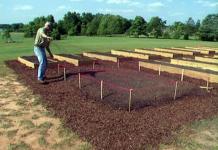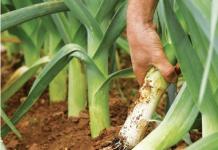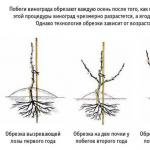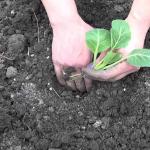Carrots do not require special care, but the rules of cultivation must be followed. It is a drought-resistant crop, tolerates frosts and prolonged cold snaps. How to grow carrots? The secrets, like those of other vegetables, lie in the correct agricultural technology.
It requires more care than other crops. Let's take a closer look at how to grow carrots in a country house or garden plot with your own hands.

Soil preparation
It is required to choose a bright place before growing carrots. The secrets lie in the fact that with a lack of sunlight due to a falling shadow or uneven surface of the beds, root crops lose their sugar content and mass.
Before you grow a good crop of carrots, you need to choose a light and even soil. It should be sandy, light loamy, with good drainage. In dense loam, the fruits grow small; during storage, they are quickly affected by rot. Carrots should not be planted on acidic soils. It requires a neutral or slightly acidic environment.
Before you grow good carrots, you need to

The bed is prepared in the fall so that it settles down. It is made loose. To do this, add sawdust, humus, peat or sand. Chalk, lime, dolomite, ash are used for liming. Manure for growing carrots should not be used, because it turns out not very beautiful and poorly stored root crops. Humus should be applied to poor soil - a bucket per square meter. If groundwater is close, the bed is made high.
The arable layer is well formed with the help of green manure roots - plants that create a good soil structure. They are sown in the garden in the fall, in order to plant carrots in this place in the spring. Worms and microorganisms also create good soil structure.
Carrot beds should be constantly changed. Predecessors should be garlic, onions, cabbage, potatoes. How to grow large carrots if you have to grow the same crop in one place? The introduction of wood ash twice a year in the amount of 0.2 kg / m 2 will help here, followed by digging.

In the spring, a week before planting, the bed is leveled, loosened, treated with a 0.3% solution of vitriol, watered with warm water, and then covered with a polyethylene film. During this time, it will retain moisture and warm up well in the sun.
How to prepare seeds for sowing
Germination of carrot seeds is small - 55-75%. In this regard, the seeds should be taken fresh. In addition, carrots do not differ in uniform germination. After 2-3 weeks, the first shoots should appear. Seeds germinate for a long time due to the presence of essential oils on their surface, which slow down the penetration of moisture.
Before growing, it is necessary to prepare for sowing. Consider several ways to pre-germinate them.
Soak
Seeds are poured into cloth bags and kept overnight in warm water. Water must be changed every four hours. It can be made into a nutrient solution by adding wood ash (30 g/l). After the seeds must be washed.
The method will be more effective if additional hardening is performed. Seeds in wet bags are placed in the refrigerator for 2-5 days.
Soaking with nutrient solution
Use a weak solution of potassium permanganate with the addition of ½ teaspoon of fertilizer per liter of water or a mixture of nitrophoska and boric acid (1/3 teaspoon and 1/2 teaspoon per liter of water, respectively). Seeds are scattered on gauze folded several times, and also covered with it from above and poured with a solution for a day. The liquid level should be just above the tissue. Then they are washed with water and put in the refrigerator for three to four days.
If the weather does not allow planting seeds, they are left on the bottom shelf of the refrigerator, keeping them moist all the time. In this case, you need to ensure that they do not germinate more than 0.5 cm.
Heat treatment
Heat treatment of seeds consists in their successive immersion in hot and cold water. They are poured into a bag and rinsed at a temperature of 50 degrees, and then dipped in a solution of humate and kept warm for two days. As a result, the germination of not only carrots, but also parsley and dill is accelerated.
bubbling
Bubbling speeds up the seed preparation process. An air or oxygen supply hose with an emery stone filter at the end is brought to the bottom of a non-metallic container with water. A mesh with seeds is placed on top.
During the bubbling process, the water is saturated with air. At home, a small aquarium compressor is enough for this. Bubbling time for carrot seeds is 17-24 hours. After the material is removed to the middle shelf of the refrigerator, where it is stored for 3-5 days. Before sowing, the seeds are dried for 12 hours so that they become free-flowing, and sown.
Burying seeds in the soil
Dry seeds are placed in cloth bags and buried in the ground with a shovel to a depth of one bayonet, where they should be at least 10-12 days. Then they are taken out and sown in the garden. After such treatment, seedlings should appear in five days.
Another way is to mix the seeds with moist peat and keep them in a warm place for at least one week. During this period, they have time to germinate, after which they are sown. Before planting in the ground, the seeds are dried for 20-25 minutes on parchment or cloth at room temperature.
How to grow carrots. Secrets of sowing and care
Before planting, seeds are selected and purchased that are most suitable for a particular region. You can also get them yourself. Before growing carrot seeds, you should find a good and large root crop, and then plant it in the spring. By autumn it will be ripe.

Carrots grow for about three months. To get a harvest in September, planting should be done no later than May. Sowing dates cover the period from the end of April to the first decade of June. Landing before May 5 is considered optimal.
Before winter, carrots are planted when the soil becomes cold enough. It can be from the end of October to the beginning of November. Sowing and harvesting times vary by variety and region. Northern varieties should not be planted in the south, as they will grow slowly. If you grow southern varieties in the middle lane, they give abundant tops, while root crops do not develop. Some varieties bred abroad are poorly stored.
It should be produced on time, otherwise the beneficial properties and keeping quality of root crops may deteriorate.
Small carrot seeds should be evenly spread in the groove. Therefore, they are mixed with sand or peat and sown in a garden bed.
So that neighboring rows do not interfere with her growth? To ensure sufficient illumination, it is better to make the beds narrow - no more than four rows of carrots.

Along the edge, bumpers are made to prevent water from running off. The distance between the rows should be 15 cm, and for late varieties - 20 cm. The bed is watered with water and sprinkled with ash. Seeds are placed in grooves at a distance of about 2.5 cm.
During spring-summer plantings, swollen seeds are planted shallowly - by 3-4 cm. They should be sprinkled with very light soil, which is used as black soil mixed with peat, sand or humus. Then, a ventilation gap is made from the film above the bed at a distance of about 12-15 cm.
The first shoots in warm weather appear in a week. If the temperature is below 12 degrees, the time is doubled. If there are empty places, additional sowing is done.
For many gardeners, the question of how to grow early carrots is problematic. Actually, it's easy. In autumn, carrots of early varieties are sown to a depth of 2 cm, and then sprinkled with mulch to a height of 3-4 cm. At the same time, the soil temperature should be below +5 degrees. When there is little snow in winter, the beds are additionally covered with them to a height of up to 50 cm. With this method of planting, the crop is harvested earlier than usual by 2-3 weeks.
Plant thinning
How to grow a good crop of carrots if it has risen well? To do this, you need to do a thorough thinning of seedlings after the appearance of the third leaf.

All this is not as simple as it seems at first glance. In order for the plants to be well removed, the bed should be watered and the soil carefully loosened. In addition, the operation should be performed during the day so as not to attract a pest - a carrot fly flying in the evening.
Sprouts should be removed with tweezers, leaving a distance of at least 2 cm. The smallest shoots are removed. The tops are thrown away from the beds. In no case should you leave it nearby, so as not to attract pests. A good deterrent is onion arrows, which are crushed and scattered in the garden. You can cover the crops with special material. The earth around the plants is slightly crushed. After 20 days, thinning is repeated. At the same time, a distance of 6 cm is left between the carrots.
The aisles need to be loosened and weeded (at least once a week) so that a sufficient amount of oxygen enters the roots. After thinning the aisle, mulch with compost or sawdust soaked for several weeks in a 2-3% urea solution.
How to grow large carrots? Here you need the right dosage of fertilizers. They cannot be applied in large quantities at once. Carrot beds begin to fertilize with mineral water when 5-6 sheets appear. The frequency of feeding is 2-4 weeks. This culture especially does not like excess nitrogen.
In the process of growth, the upper part of the root crop comes out of the ground and turns green. It does no harm, but the taste gets worse. How to grow sweet carrots so that they do not lose their taste? When root crops appear from the ground, they are spudded, raking the ground on them with a height of about 50 mm.
Watering carrot beds
Poor germination of carrots is associated primarily with the drying of the soil. Until she has risen, the top layer of the bed should be constantly wet. Sometimes the earth should be watered even several times a day. Granular seeds germinate especially hard. Immediately after sowing, the bed is protected with a film so that the top layer does not dry out.
Until the roots appear, watering is done after 3-4 days, 3-4 buckets per 1 m 2. At the same time, they independently grow in depth and find moisture. Therefore, watering is done once a week, 1-2 buckets per m 2, and from the end of August - 1 time in 1.5-2 weeks, 8-10 liters per square. The beds are kept for two weeks without watering until harvest.
Rough root crops are an indicator that they lacked moisture. With its excess, the fruits grow small. Sharp changes from drying to excess moisture are also harmful, leading to cracking of the carrot and subsequent poor preservation.
Carrots are not afraid of cold weather, but at temperatures below 8 degrees, starch in root crops turns into sugar, and the keeping quality of root crops deteriorates. In the middle lane, the crop is harvested at the end of September in dry weather.
Collected within 1.5-2 hours, and then cut off the tops. The crop is sorted, flat carrots are placed in a ventilated box in a dark and cool place. It could be a cellar or basement.
Conclusion
You will never be able to reap a good harvest if you do not know how to grow carrots. The secrets of agricultural technology lie in the proper preparation of the soil, proper planting and care. As a result, in the fall you will get large and even root crops.
The cultivation process is of paramount importance for obtaining a good harvest of carrots. It should be given special attention, investing time and effort. Carrot is a culture resistant to various conditions. Growing a vegetable is not too difficult, but it will take some work to make it large and sweet.
Conditions for growing carrots
Carrots are a very popular vegetable crop. The vegetable is widely used in the preparation of a variety of dishes: hot, soups, salads and desserts. It is unpretentious in cultivation and care. For the best result, it is recommended to create the most favorable conditions in the soil. It is important to organize the regularity of watering and top dressing.
Some growing rules:
- In one place, carrots are recommended to be planted no more than three times in a row. The soil during this period is not depleted, retaining useful substances and trace elements.
- In the first year of planting, it is advised to use the beds on which potatoes, celery and dill used to grow - vegetables give vitamins to the earth, which later help the rapid growth of carrots.
- Use only treated seeds for planting. They are more likely to germinate than wild, untreated seeds.
- Sow in the spring, when the snow has melted and the average daily temperature is kept at eight degrees Celsius.
By creating ideal conditions for the growth of carrots, you can be sure of an excellent result. It is worth analyzing in detail all the components of successful cultivation and paying attention to them.
Note!
Consistent use of several growing methods guarantees a quality product.
How to prepare the beds
 Preparation for the planting season begins long before the actual process. As soon as the harvest ends, the soil is thoroughly cleaned of debris, grass, weeds and plant roots. In dry weather, it is necessary to dig up the beds. It is better to dig deep, carefully processing the already dug up earth.
Preparation for the planting season begins long before the actual process. As soon as the harvest ends, the soil is thoroughly cleaned of debris, grass, weeds and plant roots. In dry weather, it is necessary to dig up the beds. It is better to dig deep, carefully processing the already dug up earth.
- It is pointless and harmful to level the beds - carrots are not the vegetable that needs leveled land. Loosened soil better passes oxygen and moisture, which accumulates in the ground during the winter, and then gives it to the vegetable. It is impossible to dig up a bed in the spring; elementary raking will do.
- Pre-prepared seeds are planted in the ground at a shallow depth. Preparation of carrot crops is carried out one and a half to two days before planting. They are placed in a solution of potassium permanganate, boric acid and fertilizer. Unprepared seeds are less likely to sprout.
- Sometimes fertilizer is added directly to the soil before digging. Gardeners recommend adding humus, ash and compost. Stir thoroughly to evenly distribute the fertilizer.
- A bed for carrots is not recommended to be broken next to the plantings of dill, celery and parsley. Otherwise, rotting of root crops is possible. It is desirable that sunlight, a natural growth accelerator, gets into the garden throughout the day.
In some cases, the preparation of the beds is carried out differently. In the fall, they dig a deep trench, cover with compost and mix with ash. During the winter, the earth is saturated with microelements, and then saturates ripening carrots with them.
Techniques that will help increase the growth of carrots
 Each gardener has his own methods for increasing growth.
Each gardener has his own methods for increasing growth.
- Some recommend planting carrots not one at a time in the garden, but in bunches called "combs". Contrary to popular belief, there is plenty of room for carrots, in this position they grow even larger. It is easier to collect carrots in the ridges - it is easier to pull out a large mop of tops.
- Frequent hilling and weeding. Once a week, weeding helps the sun's rays break through the soil and saturate the product with vitamin D, which stimulates growth.
- Harvest not all crops at once. From time to time you can get carrots out of the ground, then the remaining ones will have more room to grow, and people can enjoy fresh vegetables all season.
- The closer the harvest time, the more water is required for irrigation. You need to water at the rate of 85 liters per square meter. Two weeks before the final harvest, stop watering completely to avoid rotting.
- Down and mulching. Retains moisture and vitamins.
- thinning. Thin out the carrots to the width of one palm as soon as the first leaf appears on one carrot. Providing enough space for each fruit;
Attention!
The larger the seeds, the larger the final result will be.
In an effort to increase the size of the grown carrots, you should apply several techniques at the same time. Particular attention should be paid to fertilizers. The use of additional growth stimulants is justified - the roots grow large, crispy and juicy, protected from decay.
How to feed so that the carrots are large and sweet
 For fast and efficient growth, carrots need to be fed with a variety of useful substances. Fertilizers have different properties, so it is recommended to use complexes. Depending on the origin of the fertilizer, compost can be mineral or organic, dry or wet:
For fast and efficient growth, carrots need to be fed with a variety of useful substances. Fertilizers have different properties, so it is recommended to use complexes. Depending on the origin of the fertilizer, compost can be mineral or organic, dry or wet:
- Nitrogen supplement. At the very beginning of summer, when the earth has not yet accumulated enough nutrients, you can add nitrogenous fertilizer to the soil. The growth and resistance of carrots to external influences that interfere with the proper development of vegetables will increase.
- Phosphorus fertilizer. With the addition of phosphorus, root crops become sweeter, stronger and firmer. Otherwise, the carrots will dry out.
- Potassium. Makes the taste soft, retains freshness for a long time.
- Bor. Stimulates the strengthening of plants. Unlike previous fertilizer options, the bromine solution is applied to the tops, and not to the root system.
Sharing a variety of tools contributes to faster and better development.
Carrots were cultivated and used in the diet about 4,000 years ago. Since then, this vegetable has been used in the preparation of many dishes. Today it is one of the most sought after root crops.
carrot harvest
Carrots have excellent taste and contain many vitamins B, C, PP and K, which are so necessary for humans.
Growing carrots and getting a tasty and rich harvest is possible subject to the rules and procedures for growing it.
Planting carrots
Two landing options:
- spring
- autumn
You can use both the first and second options, but when sowing in the fall, it is necessary to approach the choice of the sowing site more carefully.
The place for landing in the fall should not be influenced by drafts, and a flat surface without slopes is also necessary.
The landing site should be well lit by sunlight. It is better to choose a place where tomatoes, onions or potatoes grew early. Planting carrots is not carried out in the area where greens (parsley, sorrel) grew earlier.
The most favorable landing is in the second half of spring. In early April, seeds of an early variety are sown.
This vegetable belongs to crops resistant to the influence of cold weather, but not frost. Carrot seeds will germinate even at a temperature of +4° +6° C.
For the spring planting of seed, the soil must be prepared in the fall. It is fertilized with organic and mineral fertilizers and dug up.
This culture will bear more fruit if humus, chalk, lime are added to the soil. The soil needs neutral with zero acidity.
The distance between rows is at least 20 cm.
Tall crops should not grow nearby. It is unacceptable to get a shadow on the tops. You should not choose a place for planting a vegetable if fruit trees grow nearby.
Carrot seeds - preparation for sowing

carrot seeds
Before planting, the seeds are soaked (hardened). They should first be rubbed with your hands to remove the villi covering the surface of the seeds.
After swelling, dry the carrot seeds.
To obtain stable seedlings of carrots, the seed must be hardened by placing it at a temperature of about 0 ° C until it swells completely.
Landing methods:
- Planting dry seeds
This is the easiest way.
- Planting swollen seeds
- Band sowing
For band sowing, you can purchase ready-made seeds attached on a paper tape, or glue them yourself to the paper with starch-based glue. The grains are placed at a distance of at least 5 cm from each other. When planting in this way, the soil is preliminarily shed with water.
- Sowing granular seeds
In the middle of each granule is a seed. The granule shell consists of a gel that swells when exposed to moisture. The advantage of this method is the rapid germination of seeds.
- Planting germinated seeds
Germinated seed germinates quickly, but in dry weather it will have to be watered ahead of time, as the shoots are very weak and subject to earth pressure.
The depth of seed embedding should not exceed 3 cm in any way. After sowing the seeds, the soil should be covered with organic mulch and slightly moistened.
Why, when and how to thin out carrots
If we sow carrots with dry seeds, then they usually sprout too densely, which means they will interfere with each other's growth and development. The fruits will be small, twisted. To avoid this, seedlings need to be thinned out.
The first thinning is carried out as soon as the 3rd leaf appears on the carrot shoots. It is best to remove such sprouts with tweezers. With the help of tweezers, even very small sprouts are removed without damage to neighboring plants.
To prevent the appearance of carrot flies (carrot pests), we remove waste from the garden.
During the entire growth period of the plants, we weed the beds from weeds, loosen the earth for the flow of oxygen to the roots.
Subsequent thinning is carried out one month after the first. The interval between root crops is left at least 5 cm.
The main pests of carrots are aphids and carrot flies.
Their presence can be determined by partially twisted green tops. Such insects live on not well-groomed, overgrown and waterlogged beds.
When and how to water the root crop
Carrots need to be watered frequently. Uniform and regular soil moisture is one of the most important factors affecting the growth of this crop. With a lack of moisture, the young root system of carrots may disappear, but excessive moisture in the soil can also cause it to rot.
After planting, you need to ensure optimal watering of carrots:
- Sprinkler irrigation is used to accelerate seedlings.
- After germination, moisten the soil every 2-3 days.
- During the formation of the root crop, the irrigation regime changes. The frequency of irrigation is reduced, but the volume of liquid used at a time increases.
- During active growth, moisturize once a week.
- We stop watering carrots about a month before harvest. Watering at this time will lead to excess moisture, increase the water content of the carrots and reduce the shelf life.
Before digging up carrots, it is better to moisten the soil a little.
How to feed carrots in the open field
Throughout the growing season, the plant needs to be fed.
For this use:
- Mineral fertilizers
A month after the appearance of the first shoots, we begin to feed the plant.
The first time - fertilizers containing potassium, nitrogen and phosphorus (for 10 liters of water 1 tbsp. nitrophoska). The second dressing of carrots is carried out with the same solution in half a month, and the third - in the first half of August.
- organic fertilizers
The most effective are peat and compost.
- Folk remedies
Ash
How to prepare an infusion of ash, see this video.
Fertilize carrots with the prepared solution during the second half of the growing season.
Ash also helps prevent carrot diseases.
Boric acid
Foliar top dressing with boric acid is carried out during the period of growth and ripening. Treat the tops with a solution of boric acid (1 tsp per 10 liters of water).
Carrot storage
Proper care of carrots results in an excellent harvest that will need to be stored for the winter.
Important! The tops of the vegetable are cut off.
- Sand storage.
Sand protects from the appearance of excess moisture and maintains a certain temperature regime.
We fill the lower part of the box with wet sand, 4 cm high, and lay out the fruits. The fruits should not touch, then again sprinkle them with a 4 cm layer of sand, etc.
- In the sawdust of coniferous trees .
This method will prevent the vegetable from sprouting and prevent the appearance of fungi and carrot diseases, thanks to the components contained in coniferous trees.
As well as when storing in the sand, lay out in layers.
- In polyethylene bags.
Fill large bags with vegetables and do not close. This will help them not wither for a long time, as well as protect them from decay. If the bag is closed, small holes must be cut in it for air circulation.
- In clay.
Vegetables are covered with a protective layer of clay, which will help keep them fresh until spring.
- In sugar bags.
And so, to get a good harvest of carrots, we observe the planting dates. Do not forget to thin out and water the plantings in time. And to save the crop, choose any of the methods you like.
A rich harvest of carrots to you, dear summer residents!
On our table is constantly present - a root crop, which is a source of carotene, our orange miracle. It is one of our favorite and most important vegetables.
No other vegetable can replace it, because it contains many substances useful for our body: a large amount of vitamins, essential oils, phospholipids, sterols, mineral salts, trace elements.
And even, the middle of the root crop, which many gardeners dislike, contains apigenin, a substance that has a beneficial effect on the work of the heart. Finely grated carrots can heal burns, purulent wounds.
In Rus', carrot juice was used to treat inflammation of the nasopharynx, heart and liver diseases. Also, carrot juice relieves fatigue, spring beriberi, if you drink it in half a glass 3 times a day.
And almost everyone knows that it is very useful for people with vision problems.
Carrots are widely used in cooking, both raw and in the preparation of a wide variety of dishes, as well as for juice.
A bit of history
According to pundits, carrots were first grown in Afghanistan, where the largest number of its species still grows. Initially, carrots were grown not for the sake of the root crop, but for the fragrant leaves and seeds.
The first mention of eating carrot root is found in ancient sources in the 1st century BC. AD
Archaeological studies show that carrots were grown much earlier - almost 2 thousand years BC.
Modern carrots were brought to Europe in the 10th-13th centuries, and in our country it appeared during the time of Kievan Rus.
At first, yellow and white root crops were grown, and only at the beginning of the 18th century did mention of orange carrots appear.
And the legends say that in the Middle Ages, carrots were considered a delicacy of the dwarves and they exchanged this root crop for gold bars...
carrot requirements

Carrots are quite a demanding crop, and especially to the soil. It likes to grow in fertile, light, loose, permeable and weed-free soil.
The best site for planting carrots will be the one on which manure was applied 1-2 years ago, since carrots react very poorly to fresh manure. In this case, many ugly, branchy root crops grow with very poor taste.
Also, non-standard carrots can grow under the following conditions:
if fertilizers containing chlorine are applied, the roots will bend or branch;
if you deoxidize the soil on the eve of planting, the carrot becomes multi-tailed;
if there are any obstacles in the soil, for example, pebbles, organic residues and the like;
if there is excess moisture in the soil, the root crop becomes hairy or cracks, the tops grow excessively;
if you apply and feed unnecessarily with nitrogen fertilizers, carrots begin to branch;
if we thin out seedlings incorrectly;
if during the growth of carrots there is not enough moisture - at the same time, carrots, trying to take the moisture it lacks from the soil, release lateral roots, which is bad for its taste and appearance (the flesh becomes rough, the root crop is short and “horned”).
Based on this, it is necessary to approach the preparation of the soil for planting carrots with all responsibility.
Firstly , it is better to prepare it in the fall: carefully dig; if it is necessary to deoxidize the soil, then add lime or dolomite flour for digging; you can also add phosphate and potash fertilizers. But, in general, it is best to make all kinds of additives in the soil for carrots, given what type of soil is in your area.
If you have peat soil, then it would be good to add river sand, humus and clay soil to it.
If the soil is clayey - river sand, peat, humus, and with fertile chernozem soil, we only add sand in the spring.
Secondly , in the spring, the plot for carrots, prepared in the fall, must be loosened deep enough, adding a pre-complex mineral fertilizer; try to select all the pebbles so that nothing interferes with the growth of the plant.
Another important condition for the growth of carrots is good illumination of crops. Shading has a very negative effect on plant growth, especially in the initial stages.
If our plantings are thickened and there are a lot of weeds, then the carrots stretch out, the formation of root crops slows down and a lot of small root crops (the so-called undercut) are formed.
Carrots are relatively cold hardy and drought tolerant plants. Its seedlings can tolerate frosts down to minus 2 O C, and already adult plants and up to minus 4 O WITH.
But in those root crops that have suffered frosts, the keeping quality is still reduced.
Carrot seeds germinate at temperatures above 3 O C, and the optimum temperature for its growth is about 18-25 O C. If the temperature rises above 25 O Plant growth slows down.
When choosing a site for planting carrots, it is also desirable to take into account the fact that the best predecessors for it are plants such as: tomatoes, legumes, cabbage, potatoes, cucumbers, green crops.
Sowing dates for carrots

There are several dates for sowing carrot seeds and they depend on when and for what purposes we want to get a crop.
So, for example, to get an early harvest, carrots must be sown from mid-April to early May ( early spring sowing). Carrots sown during these periods can be harvested in a bunch from the end of June to the end of July, and from August we already get a real root crop for summer consumption.
The next sowing date is from mid-May to early June ( summer sowing). This is the main period for sowing carrots, which we will lay for winter storage.
If we want to get young carrots in the fall, then short-fruited varieties can be sown as early as mid-July.
A winter sowing seeds (from October 20 to November 15) can provide us with an even earlier harvest. But not every site is suitable for these purposes. For winter sowing, it is necessary to choose a place in our summer cottage, where in spring the snow melts earlier and the soil should be light, sandy loam, so that in spring there is no flooding of crops.
When sowing seeds before winter, they are only disinfected, and then dried. In the spring, they will pick up moisture, swell and germinate naturally. It is not recommended to germinate seeds, as the sprouts will freeze. Using these sowing dates, we will be able to have fresh carrots from summer to next spring.
In addition, when sowing late carrots until the 20th of June, the development of plants does not coincide with the greatest activity of the carrot fly (in May), which makes it possible to grow better root crops.
How to sow carrot seeds
Essential oils contained in carrot seeds in large quantities prevent the rapid access of moisture to the embryo and delay germination. Therefore, before sowing, it is necessary to carry out pre-sowing preparation of seeds: disinfection, soaking, germination.
You can read about how, as well as correctly, in previously published articles.
Then the treated seeds are dried and sown. With this treatment, seedlings appear much earlier (after 6-10 days), while if sowing with dry seeds and in insufficiently moist soil, the emergence of seedlings can take up to 40 days.
It is best to grow carrots in garden beds. Before sowing, we thoroughly loosen the prepared beds to a depth of 10-15 cm, then level the surface and make narrow grooves up to 5 cm and a depth of about 2 cm. You should not make grooves deeper, as this can significantly slow down the germination of carrots. We make grooves at a distance of 25-30 cm.
In order for us to have friendly and uniform seedlings, the seeds must be planted to the same depth.
And experienced summer residents advise sowing carrot seeds so that they are soft on top and hard on the bottom.
To do this, we level the bottom of the grooves and seal them with a beam specially prepared for this purpose.
After that, we spill the grooves with water and sow the seeds in moistened soil, trying to keep the distance between them 1.5-2 cm.
Sowing small carrot seeds at such a distance is quite difficult. I want to advise several methods of sowing, with the help of which you can facilitate this process:
Mix small seeds with sand: mix 1 tablespoon of seeds with 1 glass of sand, then divide the resulting mixture into 3 parts and use each part for 1 m 2 of beds.
Mix carrot seeds with seeds of beacon plants (lettuce, radish). They sprout much earlier and thus show us where the carrot seedlings are. This gives us the opportunity to carry out the first weeding of the beds with carrots, without fear of damaging the plants, much earlier than usual.
Also very convenient is the liquid sowing of carrots, in which the germinated seeds are mixed with a liquid paste made from potato starch. Then carefully "pour" them into the grooves from the kettle.
Then we cover the seeds with loose sifted soil or a mixture of peat and sand, or clean peat with a slight compaction to ensure better contact of the seeds with the soil and moisture inflow.
Watering the ground after sowing is not worth it, as the seeds can move into deeper layers of the soil and will germinate for a long time, or even may not sprout at all. To avoid drying out of the soil, the bed on top can be covered with plastic wrap.
In addition, under the film, the earth warms up much faster. The film will need to be removed after shoots appear.
How to care for carrots

Carrots need our constant attention. Caring for it is periodic loosening of the soil, timely watering, top dressing if necessary, regular weeding and pest and disease control. The most crucial moment in the cultivation of carrots is the germination of seeds and the emergence of seedlings.
At this point, the formation of a soil crust is possible, which must be carefully destroyed (preferably after watering), as it prevents the timely emergence of seedlings. To prevent the formation of a soil crust, crops can be mulched with peat.
After the first shoots appear, you can proceed to the first loosening. At the same time, we act very carefully, trying not to damage the delicate sprouts.
The best time for loosening is immediately after the rain, and if there is no rain for a long time, then we first water the carrots, and only then proceed to loosening.
When the carrots have 1-2 true leaves, we thin out the crops, leaving a distance of 3-4 cm between the plants. We do the second thinning 2-3 weeks after the first and after it the distance between the plants should be 4-5 cm.
With a smaller distance, the roots will not reach normal sizes, especially late-ripening varieties.
In order not to form ugly root crops, thinning of crops must be carried out correctly.
First, the bed is watered and only after that the extra plants are pulled out. Moreover, we pull up, and not to the side, without loosening, otherwise the main root of the left carrot may break off and the lateral roots will begin to grow, forming a “horned” root crop.
Thinning is best done in the evening, as the smell of carrots when plants are damaged can attract pests. Rejected plants should preferably be taken away from the garden and covered with earth or compost to drown out the smell.
Let me remind you once again that weeding and thinning should be carried out after rains or watering, and immediately after these operations, the bed should be watered again.
At the same time, the soil around the abandoned plants must be slightly compressed, and the holes in the ground should be filled up.
An operation such as hilling is also important, because during growth the upper part of the root crops is exposed and turns green in the light, forming solanine, which penetrates into the carrots during storage and gives it bitterness.
Hilling root crops is also best done on cloudy days or in the evening, so as not to attract carrot flies.
How much water do you need

Watering for carrots is of great importance, as this plant does not like both excessive moisture and dryness.
Carrots have one feature - late crop formation. The growing season lasts approximately 4 to 5 months.
And the growth of root crops begins only after the end of leaf growth, in the last quarter of the growing season.
Therefore, during the growth period, plants are very demanding on soil moisture, and at the end they do not tolerate its excess, and if abundant watering is carried out, root crops can crack.
In warm and sunny weather, when moisture from the soil quickly evaporates, carrots are watered 3 times a week.
Do not flood young plants too much; approximately 4 liters of water per 1 m 2 will be enough for them. With the growth of root crops, the amount of water is gradually increased.
In the middle of the growing season, carrots can be watered once a week, while already using 8 to 10 liters of water per 1 m 2.
What to feed?
If we have fertilized the soil well for planting carrots since autumn, then it is possible to grow a good crop of root crops even without top dressing.
But still, it is better to do 2-3 more top dressings during the entire growing season.
the first top dressing is desirable to be done a month after germination (1 tablespoon of nitrophoska per 10 liters of water), second- 2 weeks after the first. In early August, carrots can still be fed with a solution of potash fertilizer - this third top dressing. Root crops will become sweeter and also ripen earlier.
And it is best in the second half of the growing season, when watering carrots, add ash infusion to the water (1 liter of infusion per 10 liters of water), since ash is the best potash fertilizer, which is remarkably absorbed by all plants.
In addition, ash protects plants from many diseases and pests. You can even just sprinkle the carrot beds with wood ash once a week before watering.
It is also very good to carry out foliar feeding of carrots with a solution of boric acid (1 teaspoon per 10 liters of water). It will be enough to carry out such top dressing twice: during the period of active growth of the underground part of carrots (the first half of July) and when the carrots begin to ripen (the first half of August).
When and how to harvest carrots

Harvesting carrots can be carried out in several stages.
Firstly, as soon as the root crops grow up, they can be pulled out selectively for food. From this, in the beds, the remaining plants become freer and they receive more nutrition, moisture and begin to increase their mass faster.
And late varieties of carrots intended for winter storage are harvested from the second half of September to the first half of October, before the onset of frost.
It is not worth rushing with harvesting, because root crops grow intensively in the second half of September. But at the same time, it is impossible to be late, since carrots that have fallen under frost are poorly stored and die.
Carrots can be pulled out by the tops if your soil is light. On denser soil, this will be quite difficult to do, and you can’t do without the help of a shovel. Shake off excess soil with your hands.
After pulling out, we sort the root crops: we leave the whole and healthy ones for winter storage, the damaged ones are set aside for quick processing, and it is best to throw away the small and sick ones.
Then, for those root crops that we are going to lay for storage, we cut the tops to the very head.
If you liked the cultivated variety of carrots and you want to get your own seeds of this variety, then select the best root crops (seeds) and leave about 2-3 cm of tops from them.
Then we dry the carrots processed in this way under a canopy (but not in the sun) and put them in storage.
How to store carrots

We store carrots in the basement (cellar) in wooden or plastic boxes. We put it in boxes in layers, pouring it with wet sand and try to arrange the root crops so that they do not touch each other.
It is also good to use moss instead of sand.
I want to advise another way to store carrots - "glazing" with clay. This is done as follows: we dilute the clay with water to the consistency of thick sour cream, dip the roots in this “glaze” and put them on a wire rack so that the excess glass liquid and the coating dry.
In such a shell, our carrots almost do not lose moisture and remain fresh until spring. But of course, at the same time, the storage temperature should be around 0 0 C and the storage should be dry.
If for some reason the previous methods of storing carrots do not suit you, then you can still thickly sprinkle the root crops with crushed chalk, while reducing the likelihood of putrefactive processes.
And if you additionally sprinkle the root crops with onion peel, then they will be stored even better.
In this article, dear friends, I only touched on the issue growing carrots, but, about all their diversity and about diseases and pests that annoy carrots, I plan to tell in the following articles.
See you soon, dear friends!
25 09.18
How to harvest carrots from your garden?
0The season in which you can collect such a type of vegetable as a carrot begins in September or October. It was during this period of time that summer residents throughout central Russia were harvesting from their plots.
More about the origin of carrots
Carrots are a cultivated plant that grows exclusively thanks to the careful care and support of a person. In the wild, the vegetable is not found, and if it is found, then in small quantities and not in the form in which it is presented in the gardens of most people.
In general, carrots, along with cucumbers and tomatoes, are the most popular vegetable planted by all owners throughout the countries of the former USSR and some European countries.
As a rule, most people plant carrots just before winter, so that this type of cultivated plant provides the owners with a fairly early harvest. This allows you to reduce the time allotted to the owner of the site for work, along with the care of all available elements of the economy. Carrots can be planted before winter - this is one of the most interesting qualities of this crop for personal use.
What other plants are there for winter sowing, besides carrots?
Now many people use a whole list of vegetables, thanks to which you can get an early harvest at no special cost, using your ingenuity and your knowledge. These vegetables include:
- Lettuce salad.
- All kinds of radishes.
- Peas.
- Beans.
- Broccoli.
- Chinese cabbage (sometimes also called "Beijing").
- Cauliflower.
- Various types of leaf lettuce for mass and personal consumption.

If we talk specifically about the varieties of carrots, then we can distinguish a certain list that is worthy of the attention of anyone who is engaged in the cultivation of crops for their garden. The best of them can be called:
- "Nantes-4".
- "Shantane".
- "Gavrish".
- "Semko-Junior".
- "Search".
- "Aelita".
Where can you plant carrots and why do you need high-quality soil when sowing carrots before winter?
First, you need to choose a place and what kind of soil will be there. This must be done so that the carrots can feel from the highest quality and favorable side, which is very important for everyone who has a desire to grow vegetables in good condition. The soil must be loose and soft so that the tool used in this case does not rest against hard ground and all kinds of stones. The softer the soil, the better and better the sowing work will be.
It is even better if the entire space of the bed is located on the leeward side, that is, directed to the leeward part. Next, a special hole is pulled out into which a dried twig is installed. This is done so that the seeder can determine in which direction he generally needs to move and what this can lead to.



















